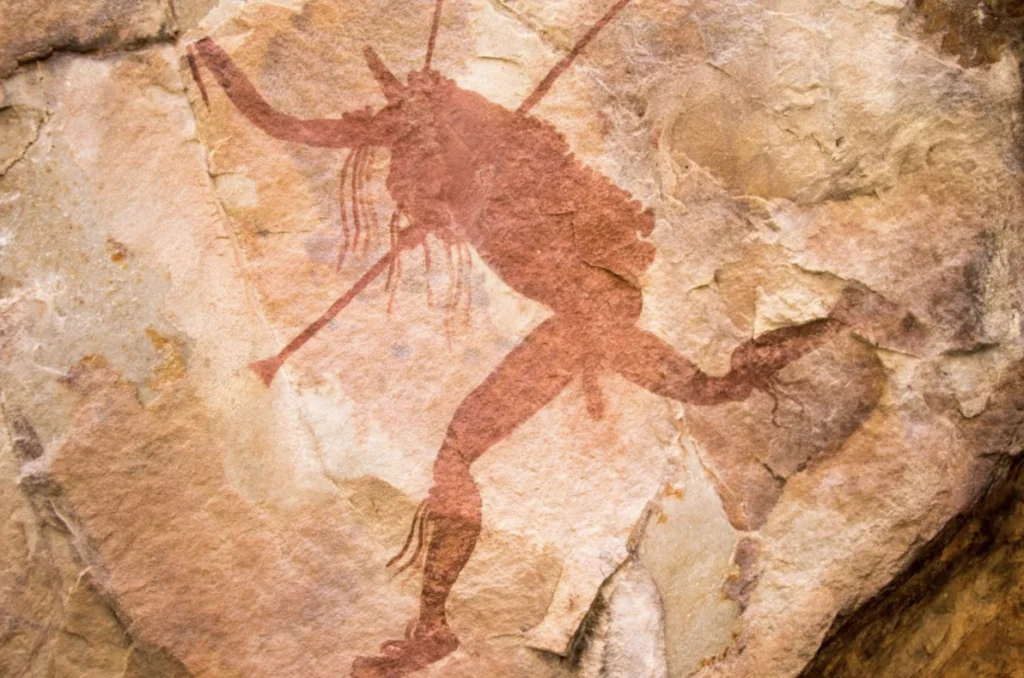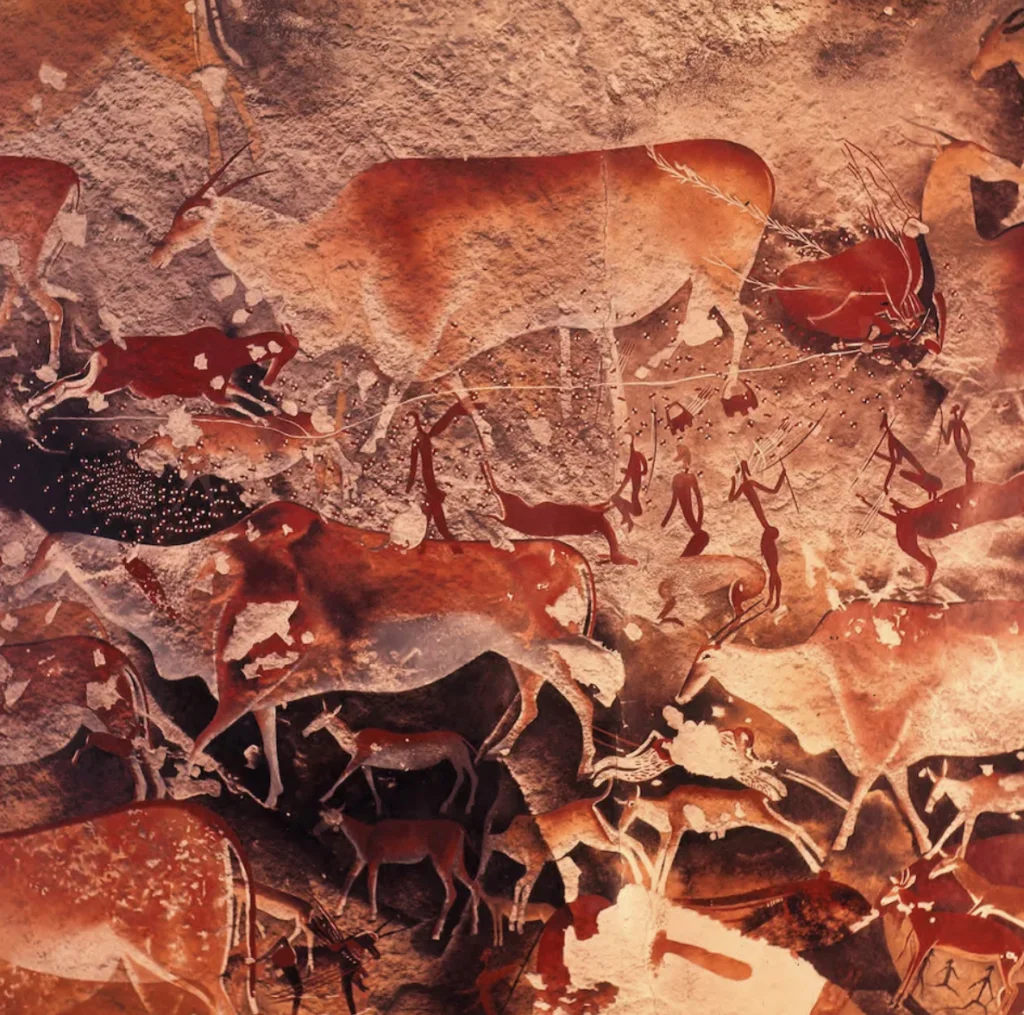South Africa is renowned for having the richest collection of rock art in the world. The ancient San rock art depicts daily life, hunting, rituals, spiritual beliefs, and wildlife of the San people. These drawings provide a glimpse into the tribes’ experiences from thousands of years ago, long before and after the arrival of the first Europeans. The legacy of the San Bushmen can be found all over the country in protected places, such as caves and rocky hills, shielded from the elements. Therefore, viewing these paintings or engravings often requires walking and sometimes hiking into mountainous areas. This long distance travel is what makes it appealing and attractive to travelers and nature enthusiasts.

“San” is a general term, used to describe the Khoisan language group, which includes the San and Khoekhoe (formerly known as the Hottentot) and is characterized by the use of clicking sounds. The indigenous San communities in southern Africa were initially hunter-gatherers and they documented their history through the rock art found throughout the country. The oldest rock art in southern Africa, approximately 30,000 years old, is found on painted stone slabs from the Apollo 11 rock shelter in Namibia. In contrast, the rock paintings in the Maloti-Drakensberg mountain massif of South Africa and Lesotho were made from approximately 3,000 years ago right up to the 1800s.
For a long time, people thought that any interpretation of the art’s meaning was as good as another but this view ignores the perspective of the San people. To really understand rock art it is important to look at it in the context of San shamanistic beliefs and experiences. The study of rock art is considered one of the most challenging subdisciplines in archaeology because unlike traditional archaeology which employs techniques such as measuring, mapping, and statistical analysis, rock art research relies on theoretical and cultural interpretations.

Although rock art can provide some historical insights, it is not considered a reliable historical document as paintings and petroglyphs do not have the same level of specificity and detail as written records. More detailed historical records became a thing after the 15th century, when South Africa was “discovered” by Europeans. The establishment of the first permanent Dutch settlement in Cape Town in 1652 marked the beginning of a period of European expansion which often resulted in the displacement of indigenous peoples and the erasure of their traditional ways of life over the next three centuries. Today, only a small number of San speakers continue to live in a traditional manner, mainly in certain areas of Botswana and Namibia. The only indication of the vast territories that the San people once inhabited is the widespread presence of archaeological sites, place-names, and rock art.

When studying San art, there are two main types of art to consider: paintings, which are typically found in caves and shallow shelters, and incised boulders and other surfaces found in the dry interior. Although less figurative, petroglyphs, which are carvings on rock surfaces, have not received as much attention as the paintings until recently. By identifying new sites, of which thousands are yet to be found, and revisiting known ones in the light of developing insights, a more in-depth understanding of San rock art can be developed.


